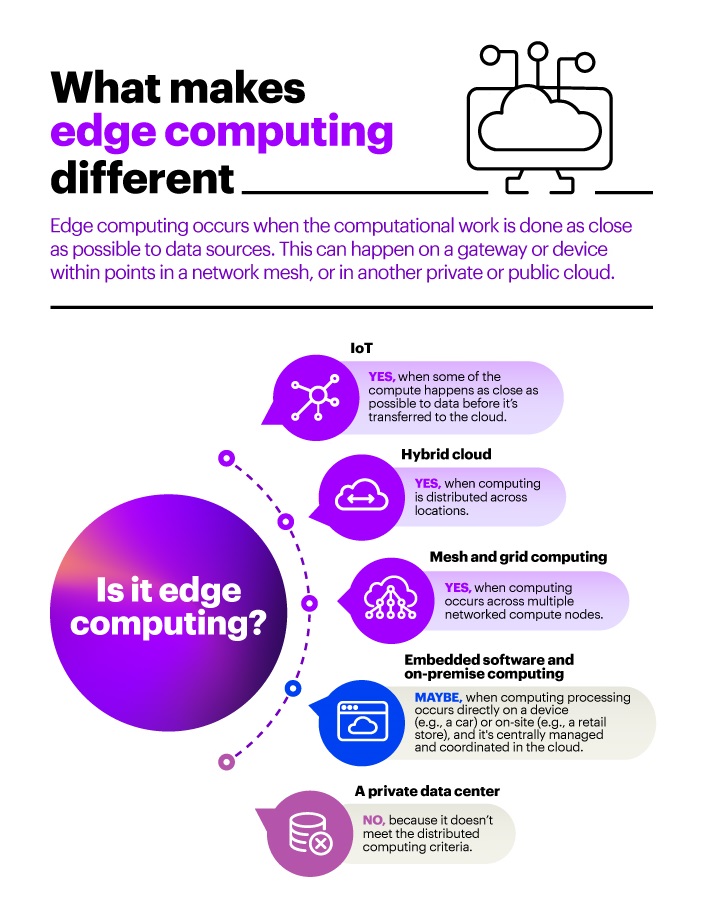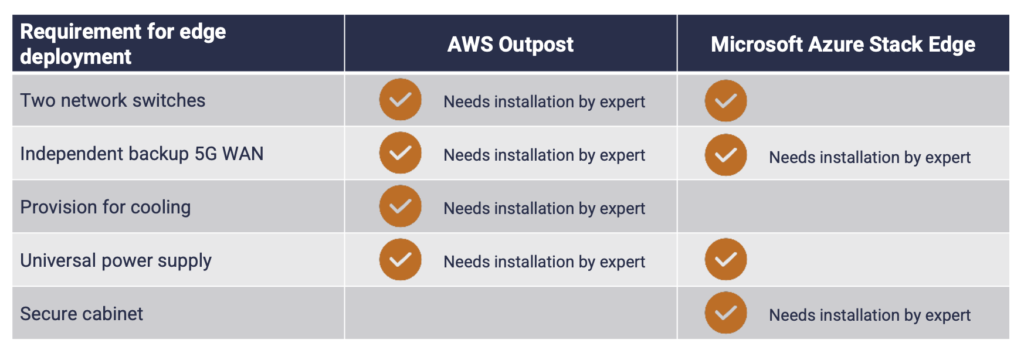The advent of 5G has brought about a paradigm shift in the way we interact with technology. Its lightning-fast speed and low latency have enabled us to connect to the internet like never before, leading to a wave of innovation and disruption across industries. But 5G is not the only technology driving this change. Edge computing, a distributed computing paradigm that brings data storage and computation closer to the devices that need it, is playing a critical role in unlocking the full potential of 5G.
The relationship between 5G and edge computing is a fascinating one. Both technologies are complementary, with 5G providing the high-speed connectivity and edge computing providing the computing power and storage necessary to process the vast amounts of data generated by 5G devices. Together, they are unlocking new possibilities in areas such as autonomous vehicles, smart cities, and industrial automation, among others. In this article, we will explore the various aspects of this relationship and the impact it is likely to have on our lives in the years to come.
Answer:
5G and Edge Computing have a symbiotic relationship. 5G enables Edge Computing to provide real-time low-latency services with high reliability, while Edge Computing enhances the capacity of 5G networks to meet the ever-increasing need for data. 5G’s high-speed and low-latency network capability enables more efficient distribution of data for Edge Computing, providing a faster connection for devices, especially in remote locations. Edge Computing in turn can reduce the load on 5G networks by processing data locally and reducing the amount of data travelling over the 5G network.

What is 5G and Edge Computing?
5G and Edge Computing are two of the most advanced technologies in the digital world. 5G is a cellular network technology that allows for faster data transfer speeds, improved network coverage and latency, and more cost-effective access to the internet. Edge Computing, on the other hand, is a distributed computing technology that enables data processing to be done at the edge of the network, closer to the source of the data.
What Describes the Relationship Between 5G and Edge Computing?
5G and Edge Computing are closely related technologies. By combining the two technologies, 5G can bring more benefits to Edge Computing solutions, such as improved network performance, faster data transfer speeds, and lower latency. Additionally, using 5G can reduce the cost of deploying Edge Computing solutions, as the technology requires less infrastructure and can be deployed more quickly.
Improved Network Performance
5G networks provide faster speeds and lower latency than traditional cellular networks. This can significantly improve the performance of Edge Computing solutions, as data can be processed more quickly and efficiently. Additionally, the improved coverage and reliability of 5G networks can ensure data is delivered more reliably and with less disruption.
Faster Data Transfer Speeds
5G networks can also provide faster data transfer speeds than traditional cellular networks. This can be beneficial for Edge Computing solutions, as it allows for more data to be processed quickly and efficiently. Additionally, 5G networks can provide faster speeds for downloading and uploading data, which can improve the performance of Edge Computing solutions.
Lower Latency
5G networks can provide lower latency than traditional cellular networks. This can be beneficial for Edge Computing solutions, as it can reduce the amount of time taken for data to be processed and transmitted. Additionally, the lower latency of 5G networks can also improve the responsiveness of Edge Computing solutions, providing users with a better experience.
Reduced Cost
Using 5G networks can also reduce the cost of deploying Edge Computing solutions. This is because 5G requires less infrastructure than traditional cellular networks, and can be deployed more quickly and easily. Additionally, using 5G can reduce the amount of energy needed to transmit data, which can further reduce the cost of deploying Edge Computing solutions.
Improved Security
5G networks can also provide improved security for Edge Computing solutions. This is because 5G networks are more secure than traditional cellular networks, and can provide end-to-end encryption for data transmission. Additionally, 5G networks can be used to detect and prevent malicious activities, which can further improve the security of Edge Computing solutions.
Frequently Asked Questions
5G and Edge computing are two related but distinct technologies that have the potential to revolutionize the way businesses use the Internet of Things (IoT). This article answers some frequently asked questions about how these technologies are related and how they can be used together.
What is 5G?
5G is the next generation of mobile networks that promises to revolutionize the way that data is transmitted across mobile networks. It will be faster, more reliable, and more secure than the current 4G networks. With speeds up to 10 times faster than current 4G networks, 5G will enable new applications and services such as virtual reality, augmented reality, and machine learning.
What is Edge Computing?
Edge computing is a distributed computing architecture that uses the edge of the network (i.e. the connection between the user and the device) to process data. It is designed to reduce latency and improve efficiency by bringing computing power as close as possible to the data source. This allows for data to be processed in real-time and without the need for a data center.
What is the Relationship Between 5G and Edge Computing?
5G and Edge computing are closely related as they both seek to improve the way data is transmitted and processed. 5G provides the high speeds and low latency that enable edge computing, while edge computing provides the distributed architecture that allows 5G services to be more secure, reliable, and efficient.
What are the Benefits of 5G and Edge Computing?
The combination of 5G and Edge computing has the potential to revolutionize the way businesses use the Internet of Things (IoT). 5G provides the speed and lower latency that enables the processing of data close to the source, while edge computing provides the distributed architecture that makes it possible to process data securely and in real-time. This combination of technologies can dramatically reduce the cost of data transmission and enable new applications and services that were not possible before.
What Industries will Benefit from 5G and Edge Computing?
5G and Edge computing have the potential to revolutionize many industries, from healthcare and manufacturing to automotive and retail. In healthcare, for example, 5G and Edge computing can enable real-time monitoring of vital signs and remote diagnosis. In manufacturing, it can enable faster and more accurate automation of complex processes. In automotive, it can enable autonomous vehicles to communicate with each other in real-time. In retail, it can enable more efficient tracking of inventory and faster delivery of goods.
In conclusion, the advent of 5G technology has brought about a paradigm shift in the way we perceive the internet and its capabilities. With its unparalleled speed and low latency, 5G is set to revolutionize the world of edge computing. It not only enables the deployment of new applications and services but also enhances the performance of existing ones, making them more efficient and effective. Edge computing, on the other hand, complements 5G by providing a distributed architecture that brings computing resources closer to the end-users, reducing latency and improving the overall user experience.
As the world becomes increasingly connected, the demand for faster and more reliable communication networks will continue to grow. 5G and edge computing are two technologies that promise to deliver on this demand. The relationship between the two is symbiotic, with each technology enhancing the capabilities of the other. As we move forward, it will be interesting to see how these technologies evolve and what new possibilities they unlock for the digital age. Without a doubt, the future is bright for 5G and edge computing, and their relationship is set to shape the way we interact with technology for years to come.



